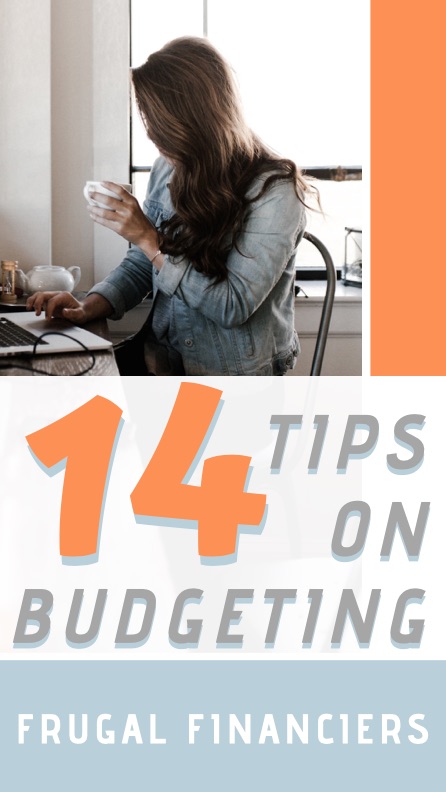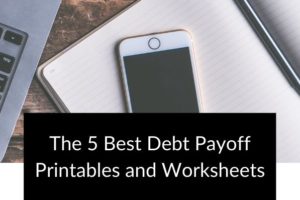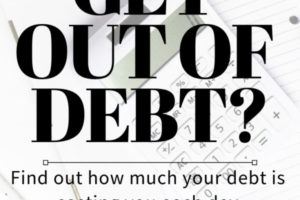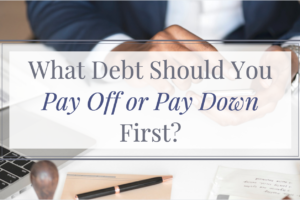This site contains affiliate links to products. We may receive a commission for purchases or sign-ups made through these links.
—————————
Are you looking for budgeting tips that will help you budget better, spend less money, and save more money?
We compiled a list of our favorite budgeting tips that we’ve learned as we went from budget beginners to budget experts.
Budgeting is the type of thing that you can feel really excited to do but quickly lose that excitement as you go through the process of making a budget.
Then you have review the budget and see how you did too. This usually can bring new excitement to see how you did.
Still, budgeting is a grind.
We wanted to share some tips on budgeting to make it less of a grind so that you can successfully budget and keep more money.
Here is a list of the 14 Budgeting Tips
- Decide Where Every Dollar Will Go in Your Budget
- Involve Your Significant Other with Budgeting
- Use Quarters Instead of Months
- Use the Past to Set Spending Expectations
- Focus on the Nonessential Expenses
- Focus on Areas Where you Spend the Most
- Don’t Forget Pay Off Debt
- Use a Personal Income Statement to Track Your Spending
- Take Advantage of Online Budgeting Tools
- Create Goals for Your Budget
- Keep Categories Simple
- Create an Other category
- Make Small Changes Over Time
- Think About Your Spending in Different Terms
Whether you’re experienced budgeting and want to improve your budget or you’re looking for budgeting tips for beginners or budgeting tips for college students, the following budgeting tips will help you create a successful budget.
14 Budgeting Tips
1. Decide Where Every Dollar Will Go in Your Budget
When making a budget it can be easy to just leave some money at the end.
But, not deciding what to do with this money can cause you to spend it rather than save it.
If you know how much money you’re going to earn, you should decide where every dollar of your earnings is going to go.
When you decide where you’re going to put all of your money, you’re more likely to stick to your budget.
So, when you get to the end of your budget and you have some extra money, use this budgeting tip and decide where you should save it.
Maybe that’s putting it in a retirement account or maybe it’s putting it in a high-yield savings account.
If you’re look for more information on where to put your money, check out our post:
The Ultimate Guide to Start Investing with Little Money | 9 Ways to Start Investing
2. Involve Your Significant Other with Budgeting
One of the best tips on budgeting is budgeting as a couple.
There is are only a few things more devastating to relationships than money problems.
Usually, when there are money issues in a relationship it means one person cares more about their financial situation than the other.
One way to create some positive energy around money and your relationship is to create and review your budget together.
If you want to accomplish your financial goals, you and your partner are going to have to be on the same page.
A budget is one of the best ways to start thinking about the money that you spend. But, you have to do it together.
So, when you go over your budget with your partner you can both discuss how much you want to spend in each area.
It also creates the opportunity to hold each other accountable for spending and reaching spending goals.
3. Use Quarters Instead of Months
Almost every budget template we’ve seen has been for a monthly budget and it seems like every personal finance website recommends that you use a monthly budget.
What if a monthly budget isn’t the best time period to be using for your budget?
Try changing it up with this budgeting tip and use a full quarter for your next budget.
A quarterly budget is for three months instead of just one.
Why is a quarter better than a month?
There are a bunch of different small reasons a few bigger reasons.
One of the biggest reasons is that it requires less work.
Instead of working on your budget twelve times a year, you only have to work on a budget four times a year.
Also, your results are much more meaningful since one period represents 25% of the year.
Spending less one month out of the year is great but spending less for a quarter of the year is awesome.
For more on why quarterly budgets are great, check out our post:
5 Reasons You Should Be Using a Quarterly Budget
4. Use the Past to Set Spending Expectations
If this is your first time creating a budget, you may not know how your should set spending expectations.
Should you just pull an amount out of the air for how much you want to spend on dinning out and clothing?
No, you should use one of our favorite tips on budgeting of using your previous spending to make a budget.
Take some time and look at how you spent money in the past.
You can use this information to understand your spending habits and guide how much you’re going to set for your budget.
For more on how to look at your previous spending, check out our post:
How to Track Your Income and Expenses
5. Focus on the Nonessential Expenses
As you’ll quickly realize when creating a budget, most of the time is spent working on expenses and spending expectations.
To save some time, you should just focus on those nonessential expenses.
Your essential expenses, like housing, utilities, and basic needs don’t usually change much.
So, while your essential expenses must be included in your budget, you’re probably not going to be able to reduce them much.
Instead, focus on figure out how much you can reduce your nonessential expenses.
Those areas like eating out, buying new stuff, and buying clothes are where you have much more control.
Hopefully, this will help to prevent some burnout as you go through your budget.
The nonessential expenses are the low-hanging fruit that you can easily make a plan to reduce.
Save the essential expenses for when you are a budget expert.
6. Focus on areas where you spend the most
In addition to focusing on nonessential expenses, you should focus on those nonessentials that you are spending the most on every quarter.
Some of us love clothes. Others love shoes. Then there’s the dinning out. Or spending on home decor.
What ever your area of overspending is, use your budget to become hyper focused on those expenses.
For example, if clothing is an area where you spend a lot of money, create expense expectations for each store that you regularly shop.
Or maybe you spend a lot on dinning out.
Create spending goals for each restaurant, coffee shop, fast food place, or hole-in-the-wall you go to each quarter.
This will help you to think more about your spending for those expense areas that usually cause you to overspend.
7. Don’t Forget to Pay Off Debt
A budget is great for reducing your future spending but what about all that spending that you’re still paying for each month?
Make sure you include how much you are paying on your each of your debts in your budget.
It can also get confusing with credit card debt if you’re not paying off the balance each month.
This is the difference between expenses and cash flow.
You had expenses on the last credit card statement but you didn’t pay (cash flow) for them fully.
You have spend some time using the balance from your prior statements to figure what is being paid off and what is being paid as debt.
You also have to think about how much you’re paying in interest charges each month.
This isn’t a problem if you’re fully paying off your balance each month, so you should definitely do if you have money to do it.
And, before you put money into savings it worth considering if you should use that money for debt instead.
For more on this check out our post:
Should You Pay Off Debt or Invest Your Extra Money?
8. Use a Personal Income Statement to Track Your Spending
A personal income statement is a look back at your previous earning and spending.
If you pulled and used your previous expenses to help you figure out your future expenses, you basically created a personal income statement.
As you continue to budget, you should keep track of how you did with previous budgets.
Using a personal income statement will show you how your spending has changed over your budgets.
There’s nothing more motivating than seeing how an area of overspending has decreased each period over the last year or two.
You can also use it to get a sense of seasonal expenses like holiday shopping or summer vacation.
This can help you accurately forecast how much you might spend on expenses that happen once a year.
9. Take Advantage of Online Budgeting Tools
There are all kinds of websites that offer online budgeting tools that you can use to make budgeting easier.
Mint and Personal Capital are two of the platforms that we’ve used to make budgeting easier.
You can use certain features of the different budgeting tools or you can use one online budget program for all of your budgeting.
If you’re just beginning to budget it might be easier to fully use one of these tools for your budget plan.
As we became expert budgeters we used the programs less and less but still use a few features.
10. Create Goals for Your Budget
We’re guess you’re on our website because you want to improve your finances.
A budget is all about improving your finances and is great because it forces you to make detailed goals.
You have the mini-spending goals in each expenses area.
Then, you have the total spending for each budget.
And finally, you have how much you expect to save.
Those are all goals that you should challenge yourself to achieve with each new budget plan.
Don’t just think about budgeting when you make your budget but also think about the goals that you are creating.
11. Keep Categories Simple
When it comes to budgeting, it can get complex quick.
Maybe you want to have 60 categories for all the different types of spending.
You shouldn’t create 60 categories though.
At most, you should have ten categories.
The more categories you have the more time and thinking you have to do while working on your budget.
When you only have a few categories everything is easier.
And, you don’t lose much in terms of having a detailed view of your spending.
For more on creating categories, check out our post:
How to Categorize Expenses | Understanding Your Spending Habits
12. Create an Other category
Having a bunch of different categories can be a big headache. So, have only a few categories.
But, then what about the stuff that doesn’t fit in one of your categories.
To remove the headache of putting expenses into a category that doesn’t really fit, it can help to put an other category.
An other category is great for all those random and one-time and weird expenses that happen in life.
What’s great is that the other category tends to not fluctuate that much for each quarter.
Since there’s always those random expenses and a quarter is long enough to be meaningful, you usually don’t spend significantly more or less.
Without an other category you’re more like to miss your budget spending goals because there always those random expenses popping up.
It’s easier to create an other category and set aside money each budget than feel down about missing your goals.
13. Make Small Changes Over Time
When making a budget for the first time, it may also be the first time you see how much you’re spending on different stuff.
This can cause panic if you’re spending a lot more than you thought that you were on certain expenses.
When this panic happens, it can cause to want to go in the opposite direction full force.
For example, last quarter we spent $1,000 on eating out and because that’s not what we were expecting, we going to budget for $100 next quarter.
That’s just not going to happen.
If you spend around $25 every time you go out, that means that you’re instantly going to go from eating out 40 times a quarter to 4 times a quarter.
You want to set yourself up for success when you’re making a budget plan.
Instead of making drastic changes, make small changes over time.
Maybe you do really want to go from $1,000 to $100 but do that over a longer period of time.
It’s a lot easier to eat out 4 less times next quarter than 36 times next quarter.
14. Think About Your Spending in Different Terms
There may be ways to think about your spending in different terms that are easier to remember.
One of the difficulties of budgeting is keeping a running track record of your spending each for each budget.
For example, you want to buy a new piece of clothing but you can’t remember how much you’ve spent on clothing for your current budget.
You have an app budgeting tool but a lot of the expenses are miscategorized so you can’t use that either.
What do you do?
We touched on this in the example for the budgeting tip of making small changes over time.
Try to think of your spending in other terms like amount of visits or shopping trips or items.
If you have 40 expenses in the eating out category that total $1,000, the average bill is around $25.
So, if you are budgeting for $500 for eating out, you can also think about it as you can eat out around 20 times.
Some places might be less (coffee shop) and some places might be more (restaurant) but it’s easier to remember how many times you dined out than adding up all of those expense amounts.
Spend some time looking through your expenses and categories to see if you can think about your spending in terms other than money spent.
Final Thoughts on Budgeting Tips
It’s a grind to go through the process of budgeting.
Learning about personal finance and becoming financially literate is all a grind.
It’s not easy to take in all of this information and then use it will full success immediately.
We had our mistakes and frustration just as you may too.
But, hopefully these budgeting tips will help to prevent you from making some of the mistakes that we’ve made.
We want you to become a personal finance rockstar and start building wealth.
That usually requires having a solid foundation and that solid foundation is usually a budget.
That’s because a budget and a personal income statement tell you how much you’ve been spending and guides you to setting spending goals.
If you are just starting out budgeting or you’d just like some more information on budgeting, check out posts below:
- Master Your Money in 5 Days Email Course
- Simple Budgeting for Beginners
- The Ultimate Guide to Organizing Your Finances and Understanding Your Money





Leave a Reply
Your email is safe with us.
You must be logged in to post a comment.